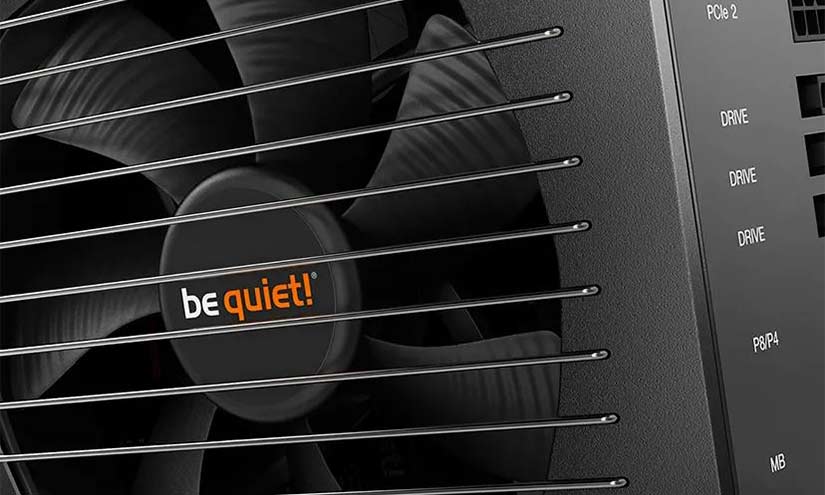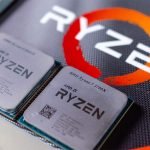The power supply unit is an important yet underrated component of a computer system.
Sure, it doesn’t improve your machine’s performance like a graphics card or CPU, but you can’t upgrade any of those components without considering your PSU first.
Best PSU For Ryzen 5600X And Ryzen 5800X
It powers all hardware parts of your system, and having a low-wattage PSU will cause your system to shut down. On the flip side, getting a too powerful PSU for a regular PC would be a waste of money.
Ryzen 5600x and 5800x are the two new midrange processors released by AMD. Both of them provide excellent value for their money, but you’ll need suitable PSUs to get the best deal out of them.
1. Corsair SF600: Best PSU For Ryzen 5 5600X
- SFX Form Factor: High end performance in a small form factor. ATX12V Vversion: v2.4. Ability to toggle single multiple 12V rails: no
- 80 PLUS Gold certified: High efficiency operation for less excess heat and lower operating costs. Continuous output rated temperature is 40°C
- Fully Modular: Make your builds and upgrades easy, with clean, great-looking results
Our first PSU is Corsair’s SF600. SFF power supplies are in great demand for a number of years now. This is mostly due to the popularity of SFF PC builds. Since larger PSUs can’t properly fit into the mini-ITX chassis, SFF PSUs like SF600 offer a seamless alternative.
Like every high-end PSU, SF600 comes with 100% Japanese 105c capacitors, zero RPM fan mode for quiet operations (under low/moderate load), and a 7-year warranty.
For those who don’t know, Japanese capacitors are considered the best because of their excellent quality control as they use a superior electrolyte and special aluminum foil. The 105c rating means it’s more durable compared to other capacitors (e.g., 85c capacitors).
From the design, it looks like any other premium PSU. On the back, you’ll get a power switch and ventilation holes for airflow. On one side, there are different technical specs listed, such as AC input, DC output, Total Load etc.
On the other, you’ll get one 24-pin ATX connector, one 4+4 pin EPS12V connector, two 6+2 pin PCIe connectors, 4 SATA connectors, and four 4-pin Molex connectors.
Being a modular supply, it comes with different modular cables. These cables are flat, which helps in cable management, and are colored black to match well with the rest of your rig.
Most SFF PSUs use smaller 80mm fan to save space (and cost). This smaller fan has to spin faster to keep the temperature low, which in turn produces noise.
Thankfully, this is not the case here, as SF600 comes with a larger 92mm NR092L fan on the bottom. This larger fan has to spin relatively slower to keep the same airflow and cause less noise subsequently.
As expected, Corsair SF600 performs well with stable voltage and a very low ripple. During the testing, we managed to get roughly 650W before it shut down.
The price is slightly higher when compared to other 600W PSUs. But it’s totally worth it when you consider the SFF nature and 80+ Gold rating.
The only downside we can think of is the relatively low number of connectors.
2. SilverStone SST-SX650-G: Best PSU For Ryzen 7 5800X
- Support standard SFX form factor, ATX requires adapter (sold separately as "PP08")
- Silent running 92mm fan with 18 dBA minimum
- All Japanese capacitors. High efficiency with 80 PLUS Gold certification
The next PSU we have is SST-SX650-G by Silverstone. It has the same dimensions as the corsair SF600 but comes with a 650W capacity. It means you can either use it for Ryzen 7 5800x and RTX 3070; or with a Ryzen 5 5600X if you intend to use a 3080/6800XT.
It has a pretty classic design where you get an ignition switch and a power connector on one side, along with vent holes.
Like the SF600, you get a 92mm fluid dynamic bearing Fan, Japanese capacitors, and black-colored flat cables.
The modular panel has two rows. The upper one has EPS and PCIe connectors, while the bottom one has ATX and IDE/SATA connectors.
You get one 24-pin ATX connector, 4+4 pin EPS12V connector, four PCIe connectors, and six SATA connectors.
Since SF600 and SST-SX650-G have almost same cost these days, you may want to go for the latter as it comes with more PCIe connectors and 50W more wattage.
On the flip side, SST-SX650-G has some cons as well. The first one is the 3-year warranty, which is quite low compared to the SF600’s 7-year warranty.
The performance of SX650-G is pretty good for an SFX PSU but not as good as SF600.
So overall, it depends on which features you can or can’t live without. If a better warranty is your main priority, then SF600 would be better. But if you want more wattage and more PCIe connectors, you can go for SST-SX650-G.
3. be quiet! BN619: Best PSU For Ryzen 7 5800X and RTX 3080
- Virtually inaudible Silent Wings 3 135mm fan
- Funnel-shaped fan opening of the PSU case for high airflow intake
- Wire-free inside the PSU on the DC side for enhanced cooling and longevity
The 600/650W PSUs won’t be suitable if you want to pair Ryzen 7 5800X with a flagship graphics card.
For that scenario, we have picked a 750W PSU – be quiet! BN619.
Be quiet! is a well-known brand in air coolers (we regularly feature their models in our roundups), but they also make some high-quality PSUs.
Being an ATX PSU, it comes with many connectors, including one 24-pin ATX connector, four 6+2 PCIe connectors (with multi-GPU support), eleven SATA connectors, one EPS 4+4 pin connector, and one EPS 8-pin connector.
ince you get multiple 12V rails here, make sure to connect cables correctly as the PSU will shut down otherwise.
Inside this PSU, you’ll find Be quiet! ‘s own SilentWings fan. It’s a 135mm dynamic fluid-bearing fan with 1800 rpm speed. It’s very quiet under low to moderate loads but can produce some audible noise when under heavy stress.
In terms, the BN619 provides a stable voltage lining with a good voltage ripple. There’s some inefficiency at a very low load, but it’s good for the most part.
One thing we disliked here is the classic cables. Flat cables are common these days and are more durable as well.
Power Consumption of Ryzen 5 5600X
The Ryzen 5 5600X comes with a 65W TDP, just like its predecessors did.
The power consumption stays around 70-75W during most of the tasks – the same as 3600/3600X but slightly lower than 3600XT. The idle power consumption is 13W, which is even lesser than what 3600X consumes.
But the numbers mentioned above applies when 5600X runs at default clock speed. In case of overclocking or PBO (precision Boost overdrive), the power consumption will increase greatly.
Power consumption of Ryzen 7 5800X
The 5800X comes with a 105W TDP, which is significantly higher than 3700X’s 65W but the same as 3800X/3800XT.
It consumes more power than 3700X, 3800X, and 3800XT – hovering around 90W in AIDA while peaking at 112W in real-world testing. Like 5600X, its idle power consumption is lower compared to the predecessors.
Like with 5600X, these numbers were taken with 5800X at stock settings and will increase if you overclock it or do PBO..
PSU requirements of Ryzen 5600X and 5800X
Alright, we have found the peak power consumption for both these CPUs. But this not the end of it.
PSU also powers the other parts, among which GPU is the most power-hungry. Since each of us has different CPU/GPU combos (and some people have multi-GPU setups), we have different wattage requirements and no one-size-fits-all solution.
At best, we can predict such combos and give you recommendations based on that. And this is exactly what we have done.
We have paired 5600X with RTX 3060 Ti, 5600X/5800X with RTX 3070, and 5800X with RTX 3080, and found the 600W, 650W, and 750W PSUs to be best for them, respectively.
In case you’re planning to have any other combo, feel free to adjust accordingly.






